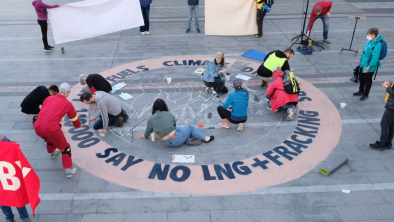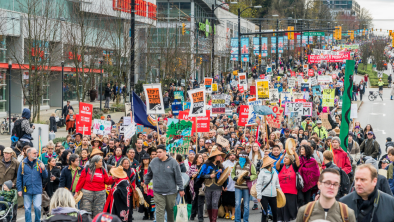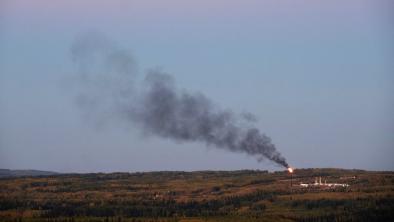Campaign out to stop Site C dam
Kamloops Daily News

Proposed third dam would be destructive, group says
The proposed multibillion-dollar Site C dam on the Peace River will wreck farmland, animal habitat and displace people.
It will also force utility bills far higher than BC Hydro’s recent estimates, a coalition determined to stop the project said Tuesday.
The Save the Peace campaign came to Kamloops in front of a small crowd of about 30 people at Thompson Rivers University. The coalition of environmentalists and residents is spreading the word to populated parts of B.C., where most residents have never travelled to one of the most scenic and ecologically important parts of the province.
Ken Boon, part of a family of pioneer farmers along the Peace River, is among the families that would be flooded out or pushed back by erosion as the flood waters creep higher and eventually batter the silt cliffs. He showed photos of produce grown in the unique microclimate, including melons, corn and tomatoes.
“It would be the greatest loss to the ALR in B.C. from one project, he said of the loss of 11,000 acres of land, nearly three-quarters of it Class 1 and 2 soils.
Residents formed the Peace Valley Environment Association in 1975 when the Site C project was first proposed. If built it would become the third dam on the Peace River.
“That valley could feed the entire North, Yukon and Northwest Territories,” Boon said. “It’s all local and it’s all right there.”
Another resident, biologist Brian Churchill said the region supports a ecologically diverse number of species second only to the Okanagan in B.C. Those range from prickly pear cactus to massive Cottonwood trees, caribou, elk, moose, beaver, otters, arctic grayling and bull trout.
He called the remaining section of valley not flooded the “constrained neck” on the Yellowstone to Yukon wildlife corridor.
“It would block the genetic flow of animals up and down the Rocky Mountain Corridor,” Churchill said.
While the area is remote from B.C.’s population in the southwest, its natural resources already provide massive revenues to the province from forestry, oil and gas and coal production.
A First Nations chief representing Treaty 8 bands said that oil and gas production has already poisoned some of the northern landscape, from spills and poorly managed production. There are 27,000 wells operating today, said Liz Logan.
Resource extraction, including dams, has forever altered habitat.
“Our elders used to say Caribou were like bugs on the landscape. . . . Today we still can’t eat the caribou.”
But is it the price of progress? Will B.C. net huge profits exporting “clean” energy to California?
Not according to the Wilderness Committee. Campaigner Tria Donaldson said much of the power will go to assist extraction of fossil fuels and California has declined to pay a premium for hydro power because it does not consider it green energy.
The coalition is asking citizens to demand the B.C. Liberal government let the B.C. Utilities Commission review the proposal – something it legislated away last year. It is also asking for a full federal environmental review.
Photo: Peace Valley under threat of flooding because of proposed Site Dam


